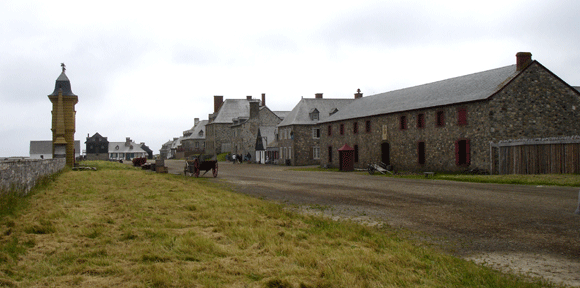
Tales of a 21st Century Gypsy
August 2, 2006.
Louisbourg
 |
Tales of a 21st Century GypsyAugust 2, 2006. |
|
Everyone had told me I had to visit Louisbourg when I was in Cape Breton. I’m an obedient type (sometimes), so I did. They were right, as it turned out, at least from my point of view. Nowadays, Louisbourg is a small village on the eastern edge of Cape Breton, on the inland edge of an excellent harbor circled by two arms of land. But in the 18th century, Louisbourg was an imposing fortress perched on the southern arm of the harbor, facing out to sea to defend French Canada against English invasion. And in 1962, when the town of Louisbourg was reeling from the economic hit of the depletion of its coal mines, the Canadian government decided to reconstruct the fortress as a way to create jobs for unemployed miners. So now, with Louisbourg still reeling from the closing of the fishery in 1992, it ekes a living out of the tourists brought in by the reconstructed fortress. |
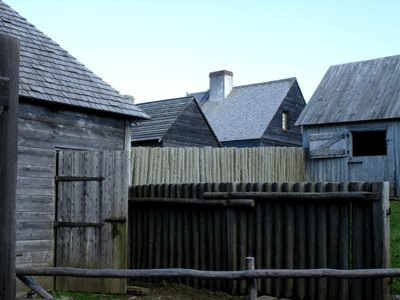 |
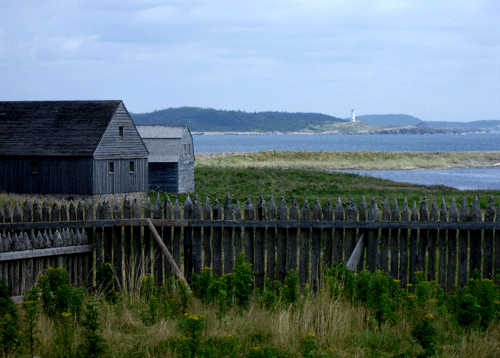 |
It is a fascinating place, especially to someone (me, that is) interested in historic preservation and economic development, and in understanding the place at a meta level; how it operates, why they rebuilt it as they did, and what is entailed in recreating a fortress and a town as they existed in 1744. I probably would have just been another bored tourist if the woman who gave the little introductory speech hadn’t mentioned a special talk to be held that afternoon, by a man from the US National Park Service – Jim Baker is his name - and from an old French town in Missouri – Ste. Genevieve is its name. Being the kind of person I am, I went to the talk. In a way I wasn’t that interested in the details of the talk. Ste. Genevieve is just south of St. Louis, a group of houses built in the 18th century when Missouri was still a French colony, before there was a USA, and long before Thomas Jefferson bought that part of the continent from France. Jim spoke about architecture, | |
|
drawing parallels between the original houses he works on and the reconstructed ones in Louisbourg, tracing the designs of both back to the regions in France from which the settlers in both places had come. Specific differences between the Missouri houses and the Louisbourg ones could be attributed to differences in climate and available building materials - the need for shaded porches in Missouri, the need to deal with snow and cold winds in Cape | ||
|
Breton. I don’t really care about the history of architecture at that level of detail, but the possibility of tracing connections between Nova Scotia and Missouri, and links to the habits and materials available to a specific group of people in one region of France, was almost eerie. And listening to the questions of the other people at the talk, almost all of whom were Louisbourg staff, was great. I had no idea how much they are all involved in the history and the accuracy of the reconstruction – not just the curators and historians, but the costumed re-enactors and the skilled artisans who crafted much of what went into the reconstruction. It got me thinking much more about what Louisbourg really is, why they rebuilt it, and why they rebuilt it in just that way, to that year. The project really did originate in a desire to create jobs for out-of-work coal miners. That, combined with the coming centennial of the Canadian Confederation and an interest in recognizing French history, probably made it much easier to justify to a thrifty government than other historic reconstructions. |
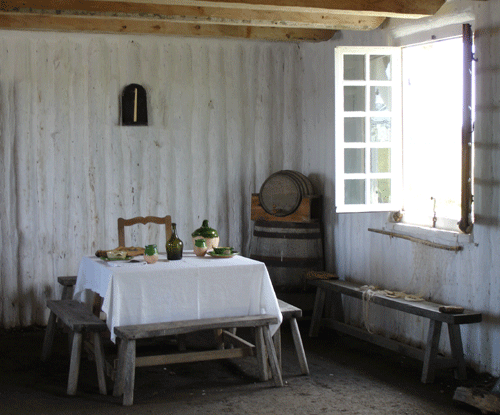 | |
|
But it also created an immediate pressure to begin digging or building, when in fact the work had to start by creating jobs for historians and archaeologists. The historical record on Louisbourg is immense, not only in Canada but also in France and England, and a staff of historians began poured through the national archives of three countries to find out what the fortress | ||
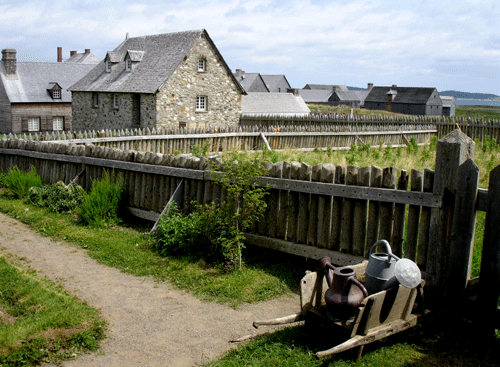 |
and the town had actually been like. Archaeologists found physical remains that confirmed the written records on placement and design of buildings, while filling in a wealth of detail on material culture – dishes, glassware, fabrics, food, and all kinds of trash. They knew that they could never afford to reconstruct the entire town, so they selected a few-block area to concentrate on, excavating the rest but then reburying the ruins to protect them from tourists, the weather, and the sea. They chose 1744 because it just preceded the fall of Louisbourg and French Canada to the English, so the community was as fully evolved as it became, but not yet directly threatened by its enemy. The whole experience was, according to a book I later read about Louisbourg, a lesson in process for Parks Canada, not least because the management of the project was based in Ottawa, not Louisbourg, and the many professionals involved were reluctant to move from the city to a small isolated | |
|
village on the eastern edge of Cape Breton Island. In time the whole operation, including library and archives, moved to Louisbourg, but for some years communication between center and periphery was one of the big challenges of the undertaking. Louisbourg has also provided an example to subsequent Canadian parks, as well as to similar projects in the United States and elsewhere in the world. In hindsight, it seems like they jumped in with both feet first and their eyes closed, and only later did they really grasp what they had gotten themselves into. | ||
|
The reconstruction raised interesting questions of how authentic to be. I think they are interesting, anyway, but you’ve probably realized by now that I am something of a geek. If you think they are dull, feel free to scroll down and click on the link to the next entry in this website. I won’t be offended. But if you are as geeky as I am, read on! Anyway, where was I? On the one hand, they wanted to recreate the fortress and the village as they had been in all respects. But on the other hand, the 1744 structures were not built with a view to accommodating thousands of tourists, and they certainly would not meet 20th century Canadian building and safety codes. Moreover they needed to use space in many ways that didn’t exist in 1744 – year-round climate-controlled offices, storage both for equipment and for fragile artifacts, machine shops, toilets, exhibition space, modern restaurants, wheelchair access, plumbing, and so on. So they compromised on historical accuracy. Mostly they hid the |
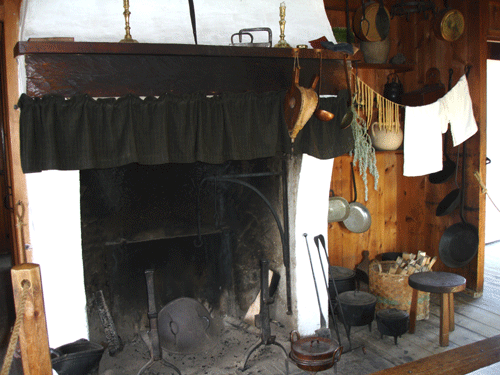 | |
|
compromises quite effectively, but we all laughed at the sprinkler system nozzles peering from the ceilings of historic homes. Better hidden were buildings that looked in place from the outside but were not open to the public; they contain offices and workshops. The modern kitchens behind the period restaurants (with period menus, too - simple but quite tasty!) were not open to the public. The public bathrooms were in buildings used for exhibitions or other facilities, not in the period houses. And so on. | ||
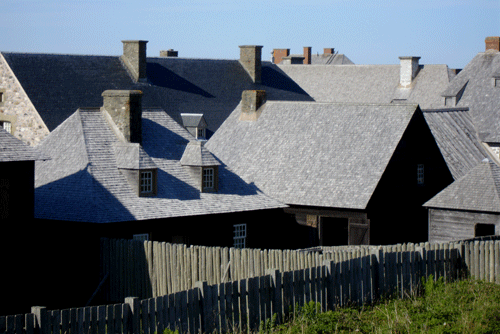 |
Once they had enough built to begin showing it, they were confronted with the question of how to show it. Who was their audience? Did they want to educate through immersion and experience or through exhibits and readings? They mostly went with the former, though they also created a few dual-purpose rooms in the less-authentic buildings, where tired visitors could relax on a couch and intellectually curious visitors could browse through books about Louisbourg, Canadian history, and the like. But most of the place is intended to recreate the experience of actually being in the 18th century fort and village. Based on the archaeological record, they have made replicas of all kinds of households items, from kitchen utensils to clothes to lace-making apparatus to farm implements. Because they are replicas, we could handle them, which was a very satisfying way to get a feel for the 18th century village. And dozens of staff are in | |
|
costume, taking the identity of a specific person – some of them actual historical figures - and they speak to the visitors as if we were traveling to Louisbourg in time as well as in space. For me it doesn’t work too well – I find it a bit silly a lot of the time. But it wasn’t hard to get them to slip out of character and just talk about the project, to solicit their opinions about what they are doing and how the reconstruction has been done. I spent so much time chatting that I stayed beyond the closing hour, and missed the last bus back to the parking lot. Which was amusing, because it meant I took the staff bus instead. I’d talked to a lot of the staff in my afternoon there, but I didn’t quite recognize them when they were out of costumes. But it was nice to hear them discussing their plans for the evening, or who was working in which building the next day. Most of them are from the immediate area, and a number are college | ||
|
students who have grown up around this project. One young woman said she had been volunteering there since she was a child – after all, there were children there in 1744, so they need children as re-enactors now. It would be an interesting twist on ordinary life growing up in a small village in Cape Breton. I returned in the morning, because I hadn’t had enough time to see it all in one afternoon. When I arrived, a man in a soldier costume whom I didn’t even recognize asked if I planned to return on the staff bus again. Just like Chéticamp, it’s a small world out there. Meet people once, and they know you! Continue to the next entry. Unless otherwise indicated, all text |
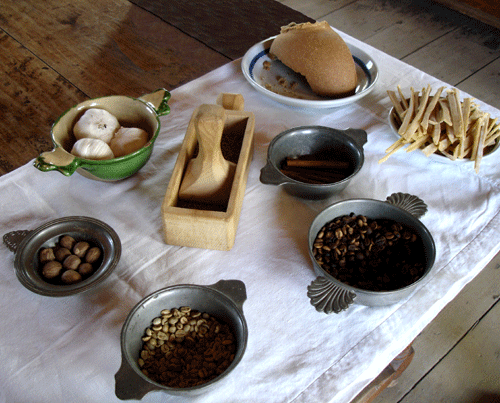 |